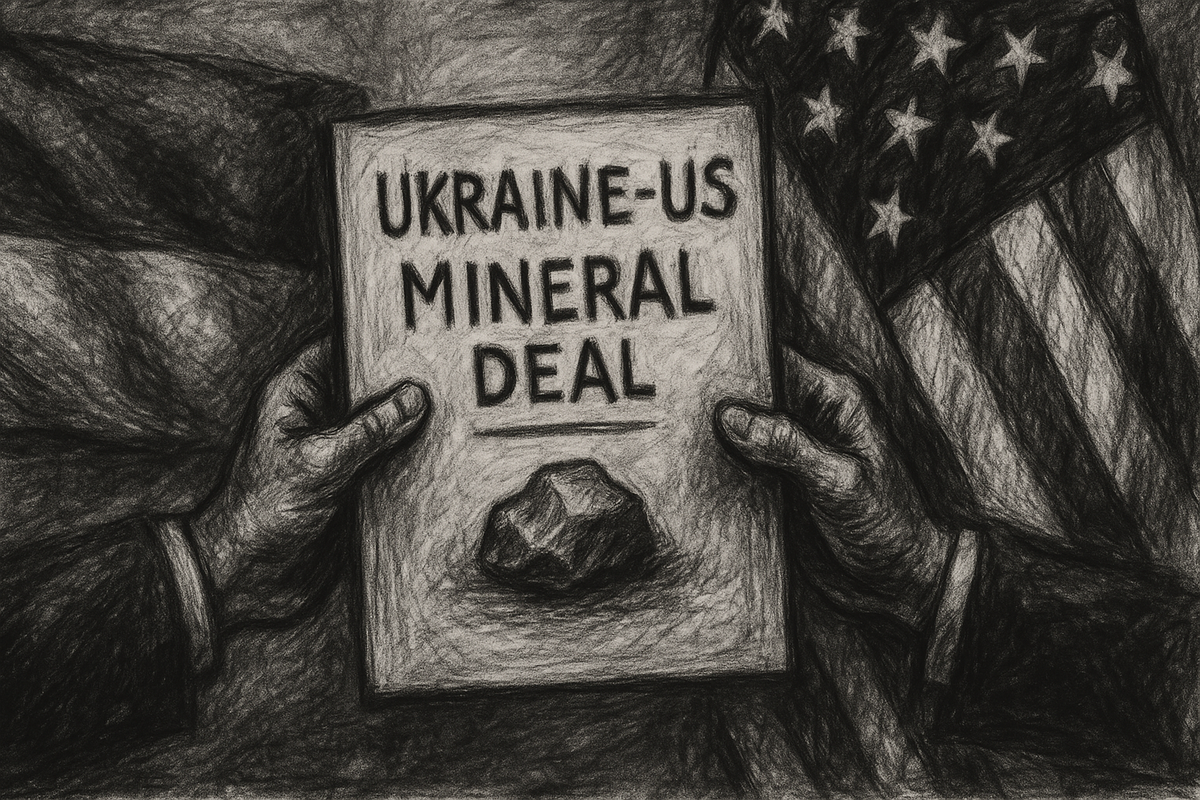A Deep Dive into the Ukraine-US Mineral Deal

On April 30, 2025, in Washington, D.C., US Treasury Secretary Scott Bessent and Ukrainian First Deputy Prime Minister and Economy Minister Yulia Svyrydenko signed a landmark agreement known as the United States-Ukraine Reconstruction and Investment Fund (NPR). This deal, finalized after months of tense negotiations, grants the US preferential access to Ukraine’s vast mineral and energy resources while committing both nations to a shared vision of Ukraine’s post-war reconstruction and development. Below, we explore the details of this agreement, its implications, and how it benefits both parties.
What the Deal Entails
The agreement establishes a 50-50 partnership, with each country appointing three board members to govern the Reconstruction and Investment Fund (BBC). The fund focuses on investments in:
- Critical Minerals: Including graphite, titanium, and lithium, which are essential for renewable energy, military technology, and infrastructure.
- Hydrocarbons: Oil, natural gas, and related infrastructure, added to the deal as a compromise after earlier drafts excluded them.
- Infrastructure Development: Projects to support resource extraction and economic recovery.
Ukraine retains full ownership of its resources and has the authority to determine where and what to extract. The US, however, secures the first right of refusal to purchase these resources or designate the buyer. The deal does not impose any debt obligations on Ukraine, ensuring its financial sovereignty (NPR).
The fund is designed to attract global investment, signaling to international partners that Ukraine is a reliable long-term collaborator. It also acknowledges the significant financial and material support the US has provided since Russia’s invasion in February 2022. The agreement requires ratification by Ukraine’s parliament, adding a layer of domestic oversight (BBC).
Key Provisions
The following table summarizes the core components of the deal:
Benefits for the United States
The deal offers several strategic and economic advantages for the US:
- Access to Critical Minerals: Ukraine has deposits of 22 of the 34 minerals deemed critical by the European Union, including rare earths vital for electric vehicles, missile systems, and green energy (Reuters). With 90% of global rare-earth stocks sourced from China, this deal helps the US diversify its supply chain amid trade tensions (BBC).
- Economic Returns: The 50-50 profit-sharing structure ensures the US benefits financially from Ukraine’s resource extraction.
- Geopolitical Influence: By supporting Ukraine’s reconstruction, the US strengthens its position in a region critical to European security. The deal sends a “strong message to Russia” about the US’s long-term commitment to Ukraine’s sovereignty (NPR).
- Strategic Alignment: The agreement aligns with President Donald Trump’s vision of tying economic incentives to security guarantees, addressing concerns about past US aid to Ukraine (NYT).
Benefits for Ukraine
For Ukraine, the deal provides critical support for its war-torn economy and strategic positioning:
- Reconstruction Support: The fund is expected to attract global investment, accelerating Ukraine’s recovery from the war. Ukrainian Minister of Economy Yulia Svyrydenko emphasized its role in signaling long-term reliability to global partners (CNBC).
- Military and Financial Aid: The US will provide new assistance, including air defense systems, counted as investments in the fund rather than loans (CNN). This avoids burdening Ukraine with debt.
- Sovereignty Preserved: Ukraine retains control over its resources and extraction decisions, ensuring national interests are protected (NPR).
- Global Recognition: The deal acknowledges Ukraine’s contribution to global security by giving up its nuclear arsenal, reinforcing its international standing (NPR).
- Economic Opportunities: By unlocking Ukraine’s growth assets, the deal positions the country as a key player in the global minerals market (BBC).
Negotiation Process
The path to this agreement was fraught with challenges. Early drafts were rejected by Ukrainian President Volodymyr Zelenskyy in February 2025, reflecting concerns over terms perceived as too favorable to the US (NPR). Negotiations faced delays due to Kyiv’s last-minute changes and issues with fund governance, transparency, and traceability (BBC).
A breakthrough occurred after a meeting between President Trump and President Zelenskyy at Pope Francis’ funeral on April 26, 2025, which paved the way for a more balanced agreement (CNBC). The final deal is less lopsided than earlier proposals, with future US military assistance counted as investment rather than requiring repayment for past aid (CNN). This compromise addressed Ukraine’s concerns while meeting US demands for economic incentives.
Geopolitical Context
The deal comes amid complex geopolitical dynamics. It signals to Russia the US’s commitment to a “free, sovereign, and prosperous Ukraine” (ABC News). It also positions Ukraine as a strategic partner in the US-China trade war, given China’s dominance in rare-earth minerals. However, concerns were raised in Kyiv about potential conflicts with Ukraine’s EU accession talks, though the deal avoids preferential treatment that could hinder EU integration (BBC).
Conclusion
The Ukraine-US mineral deal, signed on April 30, 2025, marks a pivotal moment in bilateral relations. By balancing economic and strategic interests, it provides the US with access to critical resources while supporting Ukraine’s reconstruction and sovereignty. The agreement’s success will depend on its implementation and ability to attract global investment, but it undeniably strengthens the partnership between the two nations. As Ukraine rebuilds and the US diversifies its mineral supply, this deal could reshape regional and global dynamics for years to come.
Key Citations
- Ukraine and the U.S. have signed a long-stalled minerals deal
- US and Ukraine sign long-awaited natural resources deal
- U.S. and Ukraine Sign Minerals Deal
- US and Ukraine sign mineral resources agreement
- US and Ukraine sign critical minerals deal
- U.S. and Ukraine sign landmark minerals deal
- Ukraine and the US have finally signed a minerals deal
- Seven takeaways from Ukraine minerals deal
- What are Ukraine's critical minerals and what do we know about the deal with US?
- What is in the US-Ukraine minerals deal?




Comments ()